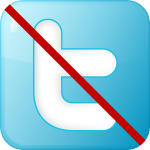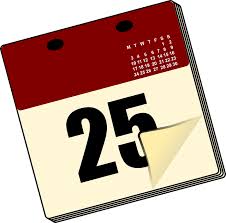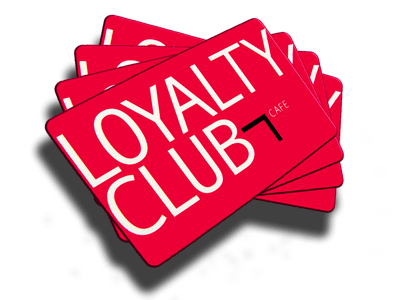Unless you have been living under a rock for the last few years, you will know that using Twitter is essential for today’s modern businesses. Not only does it allow you to engage with your existing customers on a more informal basis, it is also a fantastic way to discover new customers! Twitter really is a social media shaped marketing wonder; however, incorrect use of Twitter can result in a brand alienating and even losing customers! To help stop that happening to you, here are some general do’s and don’ts to help you on the way to becoming a top tweeter!
 Do…
Do…
- Have a relevant profile/cover picture. This is the first thing that you should do once you have set up your company Twitter account. Accounts that do not have a profile picture and stay with the default twitter picture of an egg have a much lower chance of gaining followers and you could even run the risk of being reported as a spam account! Having a relevant profile picture (for example, your company logo or a photo of the people in your office) will look more professional to the Twitter community, increase your follower count and increase engagement with your brand. This also applies to your cover picture.
- Follow relevant companies/bloggers/customers etc. Twitter is a community and it is important to get to know your neighbours! Not only will following people/companies that are relevant to your industry (such as fashion bloggers if you are an apparel based business) possibly get you a follow in return, but it will also boost your activity in the relevant social media circles.
- Schedule your tweets. As a company, you want to be tweeting at least twice a day. If you are busy with other engagements throughout the day it is a good idea to use a piece of software such as Tweetdeck to schedule in your tweets for the day. You could always try and remember to do this on your own but you would be surprised how easy it is to get side-tracked and forget (and nobody wants to follow an inactive Twitter account). However, it is sometimes essential to be tweeting in real time, as the next point will explain.
- Keep up to date with trending tweets. Once you are on Twitter, you will see a ‘trends’ section on the left hand side of your home page. This is basically showing you what people are tweeting about the most at that time of day. It is a good idea to try and tweet occasionally using these trending hash tags as there is a higher chance of more people seeing it. Obviously you can’t really schedule these sorts of tweets as they change as the day goes on. However, make sure that your tweet is still relevant to the hash tag (see more about this in the don’ts section!).
- Respond to criticism. Social media is a wonderful tool that is used by millions of consumers to share their opinions and experiences. However, not all of these experiences are positive and it is important to deal with tweets criticising your business in a professional and timely manner. The temptation might be there to simply remove the criticising comment and use an ‘out of sight, out of mind’ mentality. However, this will most likely only infuriate the customer further. Plus, unless you have noticed the comment within seconds of it being posted, chances are a lot of other Twitter users have already seen it, so deleting it will alienate those people as well as the comment’s author.
- Remember which account you are tweeting from! Many of the most offensive and harmful tweets from company Twitters have been put there by accident, with the offending tweeters claiming that it was supposed to be from their personal account and not the company one. This is no excuse and you could seriously harm your company’s reputation if you make this mistake. Get into the habit of just double checking which account you are logged into before you tweet!
 Don’t…
Don’t…
- Use irrelevant hash tags. Back in 2009, a popular furniture store committed one of the cardinal sins of Twitter; they wrote vast amounts of tweets using trending hash tags that were irrelevant to what they were tweeting about. It was blindingly obvious what they were doing and they received a massive amount abuse from Twitter users as well as losing a lot of followers. Why did they receive abuse? Because hash tags should be used when you are tweeting about that specific subject (or you can at least link back to it). Using irrelevant hash tags just to widen your audience can result in your account being labelled as spam.
- Use a trending hash tag without double checking what it is actually about. All too often, companies find themselves in the firing line of the Twitter community due to using hash tags to market their brand. You may think that this is an innocent enough act. However, in 2014, a leading pizza company used the #WhyIStayed hash tag to advertise their products without realising that the hash tag was related to domestic violence. The tweet was quickly deleted and the company apologised, but the damage was already done and the company lost a lot of followers and received abuse from angry Twitter users. Always double check a hash tag before tweeting!
- Get into arguments over Twitter. As mentioned earlier in the post, you will most likely at one point or another have to deal with a less than satisfied customer on Twitter. Now, repeat after me: ‘I will never ever, even if the angry customer is throwing insults around, get involved in an argument over Twitter’. Repeat that five times. Got it? Good. By all means respond to criticism in a healthy, professional manner (we encourage this), but do not get sucked into an argument. Doing this will only serve to make your company look unprofessional and badly managed.
- Tweet your personal opinions. Remember that your company Twitter account is representative of the company and not you personally. Whilst it is great if you can relate your company tweets to what people are talking about (reminding people of a nearing election, for example), it is not so great (and quite often offensive) for you to tweet your own personal opinions on the topic (your political views, for example). This is especially relevant if you have some extreme views. If you absolutely must share your views with the Twitter community, tweet from your personal account, not your business one!
If you follow these do’s and don’ts you should be able to prevent yourself making avoidable mistakes. Before tweeting always ask yourself: ‘is this the kind of tweet I would expect to see from a professional company?’ If the answer is no you should probably bin the tweet altogether!
HAPPY TWEETING!










